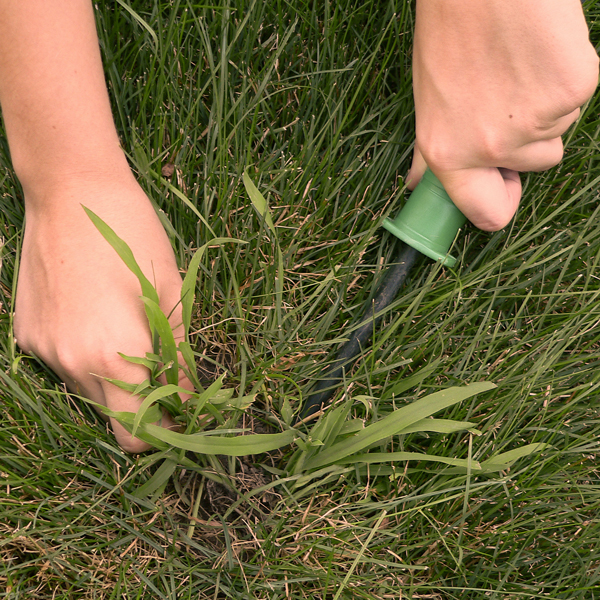After a sweltering and sunny July and a hot start to August, my lawn is really stressed. With water bans in place and only the occasional thunderstorm, my lawn has gone dormant in areas which allowed for a new crop of weeds to take over. Crabgrass and nutsedge are popping up in all these spots and if I don’t do something about it now, I may not have time to re-seed and/or over-seed my lawn in September.
Crabgrass is an annual grassy weed. Annual weeds typically love the hot weather and crabgrass is no exception. It literally can grow so fast that it will choke out your lawn. The best way to control Crabgrass is actually by preventing it from starting. Back in the spring, you should have applied Jonathan Green, Greenview or Espoma Lawn Fertilizers with Crabgrass preventers.
If you want to save your lawn now that crabgrass is active, apply Bonide Weed Beater® Plus Crabgrass & Broadleaf Weed Killer. It targets broadleaf weeds and grassy weeds similar to crabgrass but will not kill your lawn. Typically, you have to wait 4-6 weeks after you apply this product to apply grass seed. Weather conditions 4-6 weeks from now should be perfect for seeding or over seeding your lawn.

Nutsedge or nut grass, as it sometimes called, is a perennial plant with unique triangular foliage. It is light colored and usually colonizes in bunches in the lawn. One interesting characteristic of nutsedge is that tubers, often called “nutlets,” are formed on the roots. If you pull out the plants, the nutlets remain in the soil and new plants will grow from them. Nutsedge also has creeping roots, called rhizomes, which can reach 6-12 inches below ground. Rhizomes will grow horizontally under the soil and emerge to form new sedge plants. I would not suggest manually pulling these plants out of the ground as they will come back more aggressively than before.
Nutsedge outbreaks often start in moist, poorly drained lawn areas, where they quickly develop into large groups. You can kill Nutsedge by applying Bonide Sedge Ender®. Additionally, it is important to assess the conditions that led to the nutsedge outbreak. Make sure you are not irrigating excessively and that the soil is draining properly. Check for leaky sprinklers.
Ultimately, the goal is to kill the weeds and then water your lawn more often this month. This will encourage it to fill in the bare spots on its own. I also suggest an application of an organic fertilizer like Milorganite or Espoma both of which contain iron, a key nutrient for plants during the summer. Hopefully, if you follow my recommendations, your lawn will be strong and healthy by September and then you can thatch or aerate and over-seed.
Jim Connolly, MCH, MCLP
Garden Center Manager in Chelmsford








